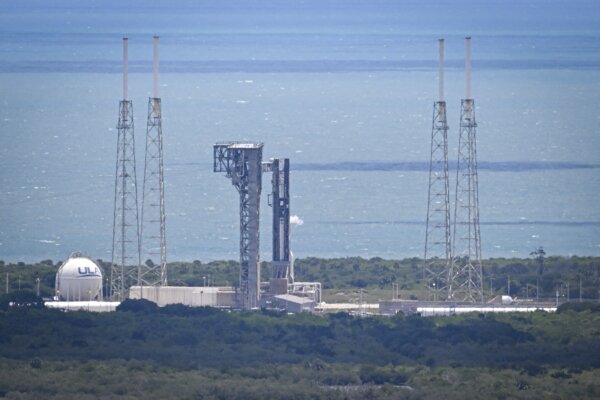
CAPE CANAVERAL, Florida—Boeing’s new Starliner space capsule, carrying NASA astronauts on its inaugural test flight, faced a setback as a computer-abort system automatically halted the launch just minutes before liftoff, according to mission officials.
This delay comes after a series of technical issues that ground teams managed to resolve earlier during the countdown. The next potential launch window is on Sunday at noon local time, but NASA has announced that they will skip this opportunity and aim for Wednesday, June 5, or Thursday, June 6, for the next attempt.
Steve Stich, manager of NASA’s commercial crew program, expressed disappointment at the postponement, stating, “We got really close today. I know it’s a little disappointing, we were all excited. This is kind of the way spaceflight is.”
The delay on Saturday was triggered by computers on the Atlas V rocket’s launchpad, coordinating the final moments before liftoff. The Starliner capsule was reported to be in good condition.
Executives from Boeing and United Launch Alliance (ULA) hoped that a review of the computers on Saturday night would allow for a potential launch on Sunday.
The decision to forgo the Sunday launch opportunity was made to give the team additional time to assess the issue.
The CST-200 Starliner’s first crewed voyage to the International Space Station (ISS) remains a crucial milestone for Boeing as they aim to compete with SpaceX for NASA contracts.
Despite the delay, the Starliner capsule is expected to dock with the ISS after about 24 hours in space, with plans for the astronauts to return to Earth in the U.S. Desert Southwest.
Looking for the Glitch
ULA Chief Executive Tory Bruno mentioned that the delay could be due to a hardware problem or a network communication issue between the computers controlling the launch systems.
Boeing’s previous attempts to send an uncrewed Starliner to the space station faced failures in 2019 due to software and engineering glitches.
Boeing’s struggles with the Starliner program, which has experienced significant cost overruns, highlight the company’s need for success in the space industry.
NASA sees the Starliner as a key vehicle for transporting astronauts to the ISS, the moon, and eventually Mars under its Artemis program.
Boeing’s journey with the Starliner has been challenging, but the company continues to work towards achieving success in the space sector.
By Joey Roulette and Steve Gorman





